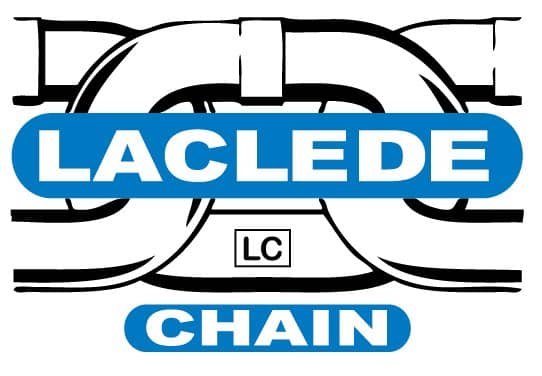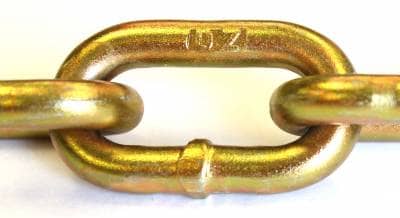How to identify chain!
Ever wonder if there is a way to tell what kind of chain you have or possibly where it is from? Maybe you need to show that your transport chain is DOT approved? Have a piece of Laclede chain and want to know if it is domestic or not? All you have to do is look at the individual links of chain!
Just looking at a cut piece of chain can help you determine a number of different things. Let’s get started with some of the basics. First, all of Laclede’s domestic chain is stamped about every six links to help you identify the grade of chain. Just look for the “L” and then the number after it. Each number following the “L” corresponds with a grade of chain.
-L10 G100 Alloy
-L8 G80 Alloy
-L7 G70 Transport
-L4 G43 High Test
-L3 G30 Proof Coil
On grade 70 this can also show that the chains are DOT approved! The “L” represents Laclede and our commitment to high quality chain products. You can also find the “LAC” stamp on some of our non alloy grab and slip hooks. The added marking on these hooks will help you identify that the hook is a Laclede product and from a Laclede verified source.
Second, on all of Laclede’s heat treated chain you can find a Trace Code. Heat treating is a process that heats the chain to an extreme temperature to harden the material to improve the metallurgical and tensile properties of the chain. Laclede heat treats Alloy Grade 100 and 80 and Transport Grade 70. These types of chain have trace codes, a combination of numbers and letters usually in sets of 2 or 3, which provide information about the manufacturing history of the chain. A trace code can also identify the origin of the steel; you will only see a trace code on domestic chain.



